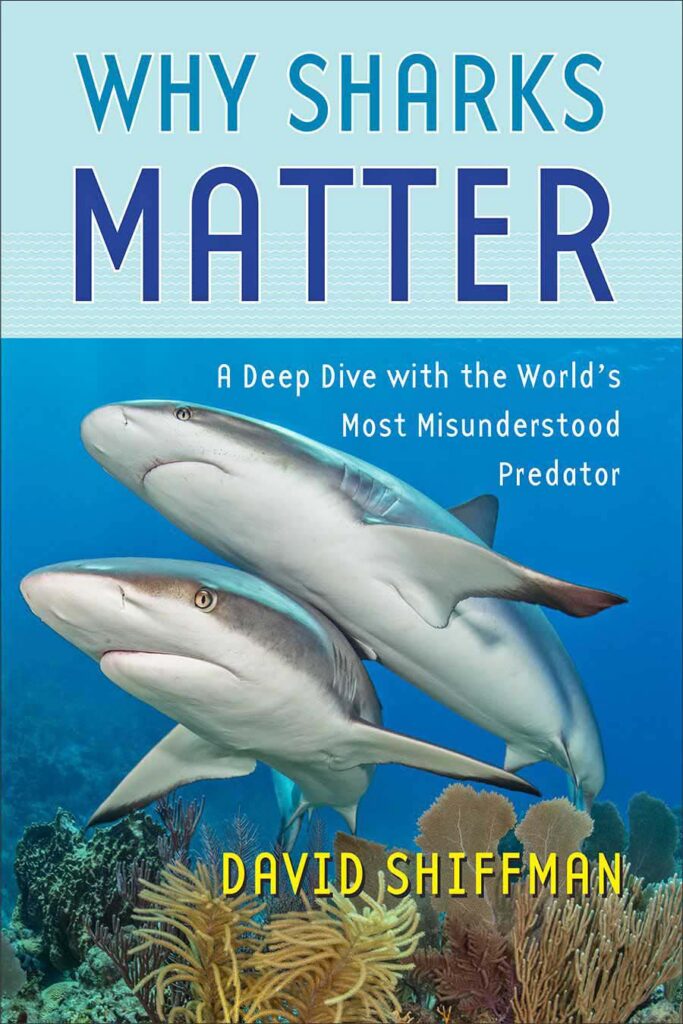- 1) محملة بالربيع، بقلم جون كين
- 2) لماذا تعتبر أسماك القرش مهمة: الغوص العميق مع أكثر الحيوانات المفترسة التي يساء فهمها في العالم، بقلم ديفيد شيفمان
- 3) العين تحت الماء: كيف فتحت كاميرا الفيلم الأعماق وأطلقت العنان لعوالم جديدة من الخيال، بقلم مارغريت كوهين
- 4) حطام كي لارغو، بقلم نيكولاس هارفي
- 5) الهاوية اللامعة: حكايات حقيقية عن استكشاف أعماق البحار، واكتشاف الحياة المخفية، وبيع قاع البحر، بقلم هيلين سكيلز
ربيع تحميل، بقلم جون كين

"مع خطوة واحدة صغيرة للبشرية بعيدًا عن الطريق، كان لا يزال أمامي قفزة عملاقة لأقوم بها. في الـ 48 ساعة التالية، كان علي أن أذهب للغوص، وأكتب عنه وأرسل مقالتي والصور المصاحبة إلى الغواص مدونة قبل الموعد النهائي للتحرير. في الوقت الحالي، بدت فرصتي في النجاح في هذا الأمر تعادل احتمال الفوز ببطولة ويمبلدون بمقلاة".
قبل عشر سنوات، كان جون كين، الذي صنع اسمه كغواص في البحر الأحمر معلم، غواص عميق ومؤلف إس إس ثيستلجورم، إلى جانب مجموعة رائعة من كتب الغوص الأخرى التي يجب قراءتها مثل المشي على الجانب العميقانطلق بمفرده في ما تبقى من "رحلة البحار الملونة" التي خطط لها منذ فترة طويلة.
هذا المشروع الطموح، الذي يجمع بين حب كين التوأم للغوص وركوب الدراجات النارية، كان محكومًا عليه بالفشل منذ البداية في شكله الأصلي. ومع ذلك، فقد كان الأمر جذابًا جدًا بالنسبة لي، كمحرر لمجلة غواص ومعجب بكتاباته والرحلات البرية المؤرخة. نظرًا لأن مثل هذه الرحلات نادرًا ما تسير كما هو مخطط لها، فمن المثير محاولة التفكير فيها شهريًا مجلة، مع المهل الزمنية غير المفيدة إلى حد كبير.
كانت الفكرة هي ركوب الدراجة بين المناخات الحارة والباردة، والقيام بجولة والغوص في البحر الأحمر قبل الانتقال شمالًا إلى البحر الأسود ومن ثم الاستمرار إلى البحر الأبيض في روسيا، والتواصل مع الغواصين المحليين وسائقي الدراجات النارية على طول الطريق. لقد كانت خطة عظيمة – ثم حدث الربيع العربي، وانقطع الطريق البري من مصر إلى البلقان وبدأ كل شيء يسير على شكل كمثرى.
رحلة برية ناجحة جدًا في البحر الأحمر (21 غطسة لمسافة تزيد عن 5,000 ميل في 17 يومًا) قام بها كين وصديقه يان وتم تأريخها حسب الأصول في غواص، ولكن بعد ذلك جاءت فجوة بينما حاول الزوجان معرفة كيفية التغلب على العقبات الجديدة في طريقهما.
ثم حصل يان على عرض عمل لم يستطع رفضه وانسحب منه، تاركًا كين مصممًا على المضي قدمًا بمفرده. هذا هو المكان ربيع تحميل يبدأ، وهو كتاب سفر مسلي كما ستقرأه هذا العام.

لحسن الحظ، لا تعتمد كتب السفر الجيدة على تحديد الوجهات المخطط لها - فغالبًا ما تكون الأشياء التي تسير على نحو خاطئ هي التي توفر الزخم. هذا هو الحال بالتأكيد هنا. غواص ربما يكون القراء قد اطلعوا على المقالات التي نتجت عن الرحلة ويعرفون كيف انتهت، ومن لم يفعل ذلك ولكنهم مهتمون بقراءتها الآن، فلن أفسد عليكم القصة.
ولن أدعي أن عمليات الغطس على طول الطريق كانت الأكثر روعة على الإطلاق، على الرغم من أن حقيقة أن الكثير من الأحداث تحت الماء تجري في أوكرانيا تضفي على الكتاب طابعًا موضوعيًا - وتذكيرًا مؤثرًا بأوقات أكثر سعادة.
لكن الغوص ليس هو الهدف، بل الرحلة هي التي تهم والأشخاص على طول الطريق، ومن الممتع ببساطة الانضمام إلى المؤلف وهو يواجه نكسة بعد نكسة ولكنه يأتي دائمًا مبتسمًا. على حد تعبيره: "الغوص وركوب الدراجات لا تقبل المنافسة. ضعهم معًا... أنا في قبة المتعة".
كتب جون كين، أمازون كيندل، 5.99 جنيه إسترليني

لماذا أهمية أسماك القرش: الغوص العميق مع العالم المفترس الأكثر سوء فهم,
بواسطة ديفيد شيفمان
ومن بين هذه المجموعة من الكتب الجديدة المتعلقة بالغوص، كان هذا الكتاب بمثابة مفاجأة سارة. لقد كتبه خبير أمريكي في الحفاظ على أسماك القرش ويتمتع بخلفية أكاديمية قوية، وقد فهمت أن الغرض منه كان توضيح الأسباب التي تجعل أسماك القرش ترتكب خطيئة، وليس خطيئة، وتستحق دعمنا الصادق. لذلك توقعت إعادة صياغة المشاعر القديمة المألوفة، ولكي أكون صادقًا، كنت سأشعر بالملل قليلاً.
لم أكن أستبعد أسلوب ديفيد شيفمان المفعم بالحيوية، والذي أتصور أنه يجب أن يجعله متحدثًا مشهورًا وكاتبًا أيضًا. إليك عينة: "ذات مرة، نظرت إلى سمكة قرش ليمونية كنا نعمل عليها ولاحظت وجود كتلة من الشعر عليها. اعتقدت أن هذا غريب، لأن أسماك القرش ليس لها شعر. ثم أدركت أن سمكة القرش قد ارتعشت فجأة، مما أدى إلى خدش أسنانها الجلدية عبر ساقي، مما أدى إلى إزالة الشعر والقليل من الجلد على الفور. كان الضجيج الذي أصدرته بعد ذلك ذكوريًا للغاية، بغض النظر عما قد يدعيه المتدربون على متن القارب في ذلك اليوم... "
لقد شعرت بالدفء تجاهه أكثر من خلال انتقاداته الصريحة للإثارة التي يتميز بها Discovery's Shark Week - بغض النظر عن رأيك في مثل هذه "المؤسسات"، فمن الواضح أن شيفمان سعيد بإثارة الجدل ويشعر بالأمان في معرفته وقناعاته التي اكتسبها بشق الأنفس بلا شك.

لماذا تعتبر أسماك القرش مهمة؟ يبدو أنه يستهدف في المقام الأول الأشخاص الذين انخرطوا في الحفاظ على أسماك القرش والراي ويفكرون الآن في الجدية والبحث عن نظرة ثاقبة للقضية والمجتمع.
لقد تعلمت الكثير من قراءته، خاصة فيما يتعلق بالتشكيك في الافتراضات السهلة التي يتخذها الغواصون أحيانًا لأسباب عاطفية حول حماية أسماك القرش، بدلاً من الاسترشاد بالعلم.
يقول شيفمان إن الأمر يتعلق بالصالح العام: لا يمكنك إنقاذ كل سمكة قرش، ولا يعتقد أي خبراء في مجال الحفاظ على البيئة أنك تستطيع ذلك، ولكن يمكنك إنقاذ أعداد كبيرة من خلال الحفاظ على الأهداف واقعية ونهجك دبلوماسي. وفي عالمه، فإن مصايد أسماك القرش المستدامة ليست ممكنة فحسب، بل مرغوبة أيضًا. قراءة مثيرة للاهتمام. بالمناسبة، شيفمان يتحدث في "من أجل حب أسماك القرش 2022" في لندن في نوفمبر.
مطبعة جامعة جونز هوبكنز، ISBN: 9781421443645
غلاف مقوى، 312 صفحة، 15 × 22 سم، 18.50 جنيهًا إسترلينيًا (17.58 جنيهًا إسترلينيًا)

العين تحت الماء: كيف تم فتح كاميرا الفيلم الأعماق وإطلاق العنان عوالم جديدة من الخيالبقلم مارغريت كوهين
العنوان يجعل هذا الكتاب يبدو مثيرًا، وقد يكون ذلك مناسبًا للطلاب الجادين في صناعة الأفلام. بالنسبة لي، يعد هذا تحليلًا أكاديميًا جافًا لكيفية تغير العمليات والجماليات الخاصة بإنشاء صور للعالم تحت الماء لجماهير الجانب العلوي خلال ما يزيد قليلاً عن قرن من صناعة الأفلام.
مارغريت كوهين هي أستاذة بارزة في الأدب الإنجليزي (والفرنسي والإيطالي) في جامعة ستانفورد، وقد تخصصت لبعض الوقت في الأعمال المتعلقة بالمحيط. لذلك، يجب على أي شخص يتوقع القيام برحلة خفيفة عبر تاريخ السينما تحت الماء أن يدرك أنك ستسلك طريق الكتب المدرسية.
يعرض القسم الأول أسس القرن التاسع عشر، وهي الفترة التي لم يكن لدى سوى عدد قليل من الناس الوسائل لرؤية العالم تحت الماء بأنفسهم، ناهيك عن تصويره - وهو مجال بعيد وغير مألوف للمواطن الفيكتوري العادي مثل المريخ.
وصلنا في النهاية إلى عام 1914 وقرأنا عن أب التصوير تحت الماء، جي إي ويليامسون، برؤيته لـ 20,000 فرسخ تحت سطح البحر. ربما يمكنك تخمين الأعمال السينمائية الكلاسيكية التي تمت تغطيتها بعد ذلك: العروض الرائدة لكوستو وهاس ومالي؛ خلال المخلوق من البحيرة السوداء إلى مطاردة البحر; أفلام بوند، المفتونة بالغوص إلى حد الشهوة الجنسية؛ بيسون الأزرق الكبير وما إلى ذلك وهلم جرا. الموضوع المتكرر هو استخدام النساء بشكل أساسي للزينة تحت الماء، سواء كانت صحية أو غير ذلك.
يتم تشريح السينما القائمة على حوض السباحة وكذلك السينما القائمة على المحيط أيضًا الخريج إلى ويس أندرسون الحياة المائية مع ستيف زيسو (كنت أتمنى أن يجعلني تحليل كوهين أرغب في تجربة هذا التمرين مرة أخرى، لكنني أخشى أن الأمر لم يحدث).
من المثير للاهتمام معرفة كيف نجح مزيج من التكنولوجيا والخيال في حل التحديات البصرية المختلفة، وكيف تغيرت المنظورات من حوض السمك المسطح إلى الغامر تمامًا، مما يضيف عين الغواص وعين القرش إلى وجهات نظر مراقب خارجي.
وبطريقة عابرة، كيف بدا الأمر وكأنه تألق الفك المفترس في التراجع عن لقطات سمك القرش لم يكن مصممًا للسماح للجمهور باستخدام مخيلتهم بقدر ما كان ضروريًا حيث أثبت بروس القرش اللاتكس مثل هذه الدعامة غير الموثوقة.
لقد كان لويد بريدجز دور مايك نيلسون المقدام مطاردة البحر الذي جذبني إلى عالم ما تحت سطح البحر عندما كنت طفلاً، وهنا يركز التحليل على تصنيف أدوات الحبكة المستخدمة للحفاظ على جاذبية المسلسل التلفزيوني الذي يزيد عن 155 حلقة - بشكل أساسي، هل سينفد الهواء من بطلنا أو أولئك الذين اضطر إلى إنقاذهم، خارج الوقت أو تناول الطعام؟
ومن المثير للاهتمام أن كوهين يحدد ذلك في مكان ما على طول الطريق – في وقت قريب من ذلك الفكين، العميق و الهاوية – خسر العالم تحت الماء معركته مع الفضاء الخارجي ليصبح عامل الجذب الكبير لرواد السينما. ثم تنتقل إلى الكوكب الأزرق عصر وعمل إشراك الجمهور في إنقاذ هذا الكوكب.
بالنسبة لكتاب مخصص للفنون البصرية، فإن الجانب السلبي الكبير هو أن جودة إعادة إنتاج العديد من الصور تحت الماء سيئة بشكل عام. من المرجح دائمًا أن تكون الصور الثابتة من الأفلام، وخاصة القديمة منها أحادية اللون، مشكلة، وكنت أفضل أن أرى لوحات أقل وأكبر وأكثر اختيارًا بعناية يتم تقديمها بشكل أفضل.
إذا لم تكن منخرطًا في دراسات إعلامية رسمية، العين تحت الماء هو موثوق ومثير للاهتمام، لكنه يقوم بتصفية سحر السينما من خلال عدسة مملة إلى حد ما.
مطبعة جامعة برينستون، ISBN: 9780691197975
غلاف مقوى، 344 صفحة، 16 × 24 سم، 28 جنيهًا إسترلينيًا (كيندل 26.60 جنيه استرليني)

حطام كي لارجوبقلم نيكولاس هارفي
بشكل لا يصدق، وصلنا بالفعل إلى الكتاب 12 في سلسلة مغامرات Harvey's AJ Bailey. أصبحت الآن مشغلة قارب الغوص الخيالية شبه حقيقية بالنسبة لكثير من القراء وقد عادت، ولكن هذه المرة تغامر بالابتعاد عن منزلها في جزر كايمان إلى فلوريدا كيز لحضور مؤتمر حول الغوص - وبالطبع لقاء مع المجرمين اليائسين.
هذا أمر جيد، لأنها وصديقاتها بحاجة إلى اتباع سلسلة من الأدلة والتعمق في حطام السفن الشهيرة في Keys مثل شبيجلجروف، دوان و بيب.
علمت أن أحد أصدقاء AJ، إميلي دوراند، كان يظهر كضيف من كتب روائي آخر متخصص في الغوص وصديق لهارفي يُدعى نيك سوليفان. لذلك أعتقد أنني سأضطر إلى استكشافه عمق السلسلة الآن (هذه خمسة كتب أخرى يجب قراءتها!).
هارفي بريطاني ولكنه يعيش في كي لارجو، حيث تعتبر جزر كايمان موطنه الثاني. بادي سيد الغوصلقد غاص تقريبًا في جميع المواقع غير الخيالية الموصوفة في كتبه، وباعتباره راويًا غزير الإنتاج ومبدعًا، لم يخذلني حتى الآن.
لا تبحث كثيرًا عن أوصاف الغوص المثيرة - فروايته تحت الماء دائمًا ما تكون مقنعة وقابلة للتصديق، وفي هذا الكتاب يعد من بين أفضل ما كتبه. التالي هو مرساة نقطة في يناير كانون الثاني.
كتب هارفي، ISBN 9798830363747،
غلاف ورقي، 15×23 سم، 268 صفحة، 9.99 جنيه إسترليني (3.69 جنيه إسترليني)

الهاوية اللامعة: حكايات حقيقية للاستكشاف البحر العميق, اكتشاف الحياة الخفية وبيع قاع البحربواسطة هيلين سكيلز
لقد قمت بمراجعة هذا الكتاب في غواص في العام الماضي، وها هي الآن في غلاف ورقي، وهي جذابة حديثًا فقط إذا كان توفير بضعة جنيهات هو ما يفسد الصفقة. أعتقد أن هيلين سكيلز هي واحدة من أفضل الكتاب (والمذيعين) وأكثرهم إبداعًا الذين يغطون عالم ما تحت سطح البحر.
النصف الاول من الهاوية الرائعة هي رحلة مقنعة عبر تلك الأجزاء من المحيط التي لن يراها الغواصون مباشرة - قاع البحر العميق، وفتحات الطاقة الحرارية الأرضية المدخنة باللونين الأسود والأبيض، والجبال البحرية العميقة وما إلى ذلك.
قد تتوقع أن يكون وصف أشكال الحياة المرئية المذهلة في الهاوية دون الاستفادة من الرسوم التوضيحية أمرًا صعبًا، ولكن يبدو أن التحدي لا يخيف سكيلز، الذي يمكنه استحضار الكلمات والصور دون بذل جهد واضح.
الهاوية الرائعة لا يتعلق الأمر بالمخلوقات الغريبة بقدر ما يتعلق بأهمية أعماق المحيطات لرفاهية الكوكب، خاصة كمضخة بيولوجية للكربون ومصدر للترياق للأمراض التي تصيب البشرية.
ثم، تمامًا كما تتعجب من قدرة المؤلف على جعل العلم ليس في متناول الجميع فحسب، بل ممتعًا أيضًا، فإنها تأخذ منعطفًا مفاجئًا في السياسة والتهديدات الشريرة للأعماق.

إذا كنت على دراية غامضة فقط بالواقع العملي للمحيطات العميقة باعتبارها مكبًا للقمامة وهدفًا لأنشطة الصيد والتعدين التي قد تكون كارثية، فإنها تجعل الأمر برمته يقفز إلى التركيز الحاد المخيف. سوف تشعر بالغضب عندما تقرأ عن المنظمات ذات الوجهين المكلفة بحماية أعماق البحار وفي نفس الوقت المتعطشة لاستغلالها.
الكتاب يدخر في الوعظ ولكن ليس هناك حاجة إليه - فالمستقبل البديل معروض بشكل واضح للغاية. هذا عمل ممتع وغني بالمعلومات وأيضًا عمل مهم.
بلومزبري سيجما، ردمك: 9781472966889
غلاف ورقي، 352 صفحة، 10.99 جنيه إسترليني (5.89 جنيه إسترليني)
أيضا على ديفرنيت: 6 كتب جديدة للغواصين

